Research and management
Working together for the common good
BY ROGER OTTMAR, MORGAN VARNER, KEVIN HIERS, KELLY CORNWALL AND JASON KLING
Better understanding the physics of fire that will lead to improved operational tools for managing wildland fire often requires scientist and researchers to shift data gathering and instrumentation from the laboratory to an active wildland fire field environment. This provides the research community an opportunity to validate, fine tune and advance current operational fire and smoke tools to better support land managers and represent real world complexity.
Since scientists often do not have the resources, jurisdiction, or fire management qualifications to establish research fires in the field, they rely on land management agencies and private landowners to support wildland fire research opportunities on incidents.
Research objectives and the presence of numerous scientists can complicate burning operations, so it is imperative for researchers to work closely with the fire managers to make sure their involvement does not negatively affect desired outcomes or accomplishments and cause unnecessary safety issues. A co-operative working relationship is critical if research is to be carried out and the results are to be useful to land management planning and execution.
The science community in the United States embarked on an effort that is of utmost importance and of great consequences to land managers called the Fire and Smoke Model Evaluation Experiment (FASMEE). Following the development of a detailed and peer reviewed study plan, the project initiated the collection of large data sets from wildland fires that covered fuels, fire behavior, energy release, plume dynamics, meteorology, smoke, and fire effects. These data sets will be used to evaluate and advance operational fire and smoke models providing substantial benefit to land managers and improving their ability to manage wildland fire on the landscapes (Figure 1).
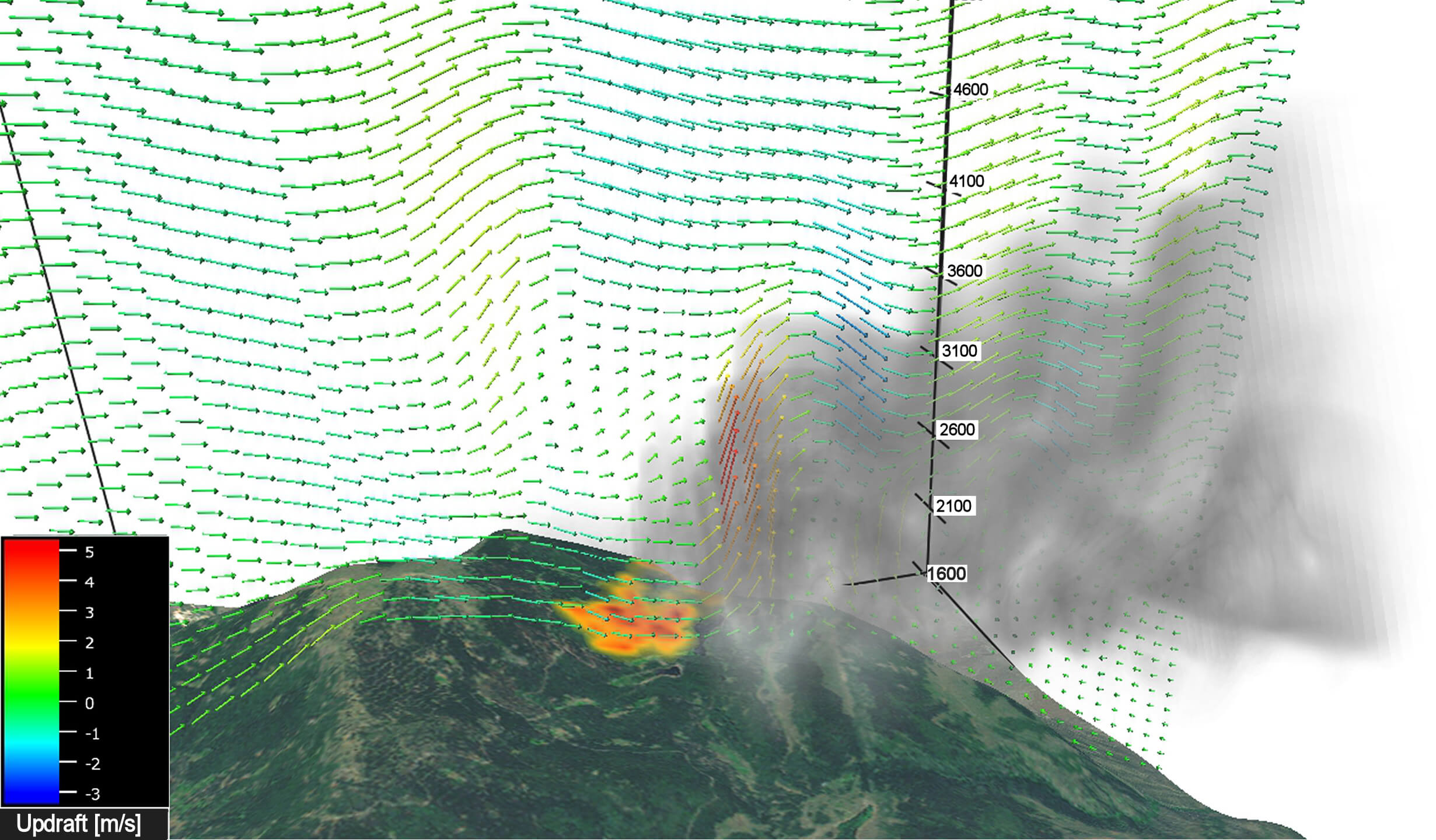
Model output credit: Adam Kochanski, San Jose State University
More than 100 scientists and 20 agencies and organizations are working together as part of the experiment to gather data on active wildland fires. This type of effort is extremely rare in the United States and very difficult to accomplish, and required a co-operative working relationship between research and management.
The relationship provided the means to meet the objectives of the scientists and clients in a process known as coproduction of knowledge. Working together, and following recommendations developed by the FASMEE team, science and land management communities can improve collaboration for future efforts.
Research
The availability of an integrated, quality-assured fuels, fire, fire effects, and atmospheric dataset for the evaluation and advancement of fuels, fire behavior, emissions, and fire effects models is limited. Since managers are so reliant on operational model output, integrated quality-assured data sets are needed to test and advance these models. With so much at stake, the Joint Fire Science Program and the US Forest Service generously supported FASMEE. This data set will be instrumental in moving fire models and ultimately the management of fire, years ahead, which will be indispensable in today’s world as fire is playing an ever more important part on the landscape (Figure 1).
Although a small portion of the experiments were laboratory based, much of the data were collected during active prescribed fires in the western United States. The field data set is designed to improve our ability to identify how fuels, fire behavior, fire energy, and meteorology interact to determine the dynamics of fuel consumption and fire behavior, smoke generation and plumes, the long-range transport of smoke, and local fire effects. Effective measurements of feedbacks between wildland fire and the atmosphere will improve current operational models and will assist land managers to better predict fire behavior, smoke impacts, and the short- to long-term effects of fire. More than 100 scientists participated from the US Forest Service, several universities, private ventures, and Tall Timbers Research Station.
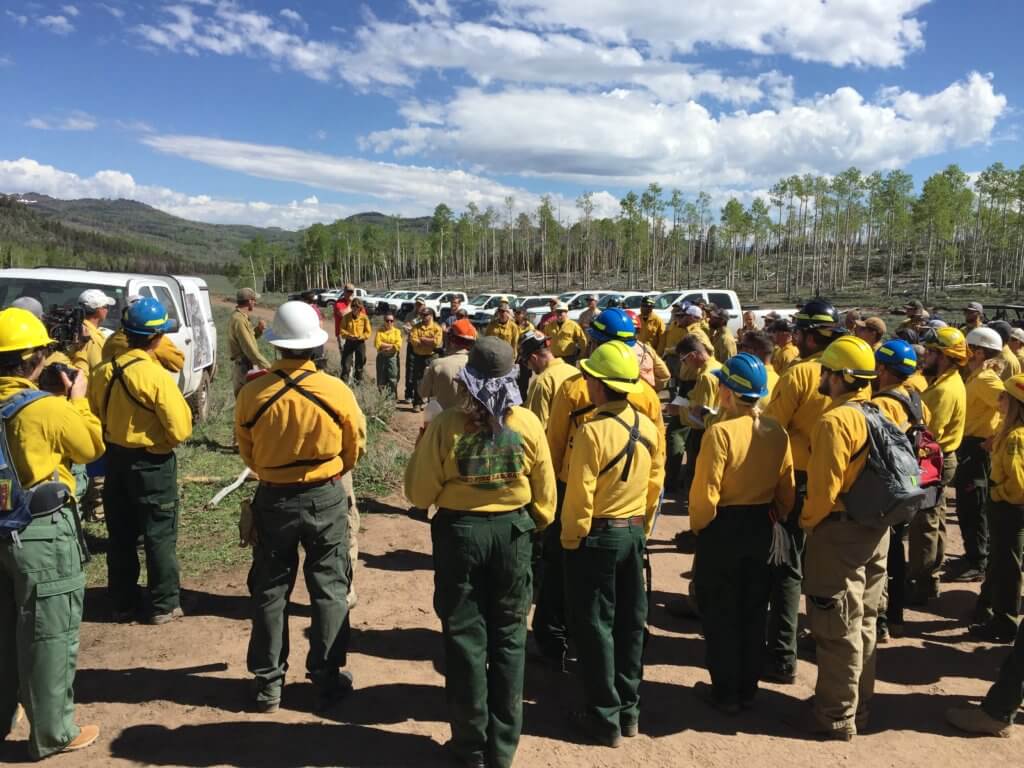
The host
The Richfield Ranger District is located on the Fishlake National Forest near Richfield, Utah. The district has embarked on an ambitious project to restore native aspen forests that are being encroached by mixed conifer stands at high elevation areas in the Monroe Mountain region. Large stand replacement fire is the tool of choice to invoke the resprouting of aspen clones to rejuvenate these native aspen stands (Figure 2). As many as 75 wildland firefighters with two helicopters and firefighting equipment from across the surrounding area converged at the Richfield Ranger District to implement the prescribed burns.
Initial contact
FASMEE was searching for high intensity, large-scale prescribed fires in the western United States as outlined in the study plan for the southwestern campaign. During a question-and-answer exchange at an Rx410 smoke management course in Boise, Idaho, Brian Van Winkle, fire ecologist for the Fishlake National Forest, mentioned the stand replacement prescribed burn plans for the aspen restoration project on the Richfield Ranger District. Communication between FASMEE and the Richfield Ranger District fire personnel and Richfield Ranger District/Fishlake National Forest management commenced in the summer of 2016, followed by several site visits and meetings with the district ranger and fire management specialist. The Joint Fire Science Program, initial sponsor of FASMEE, had its annual meeting at the National Forest headquarters followed by a site visit to stand replacement fires that had been conducted in 2016 and sites proposed for FASMEE research.
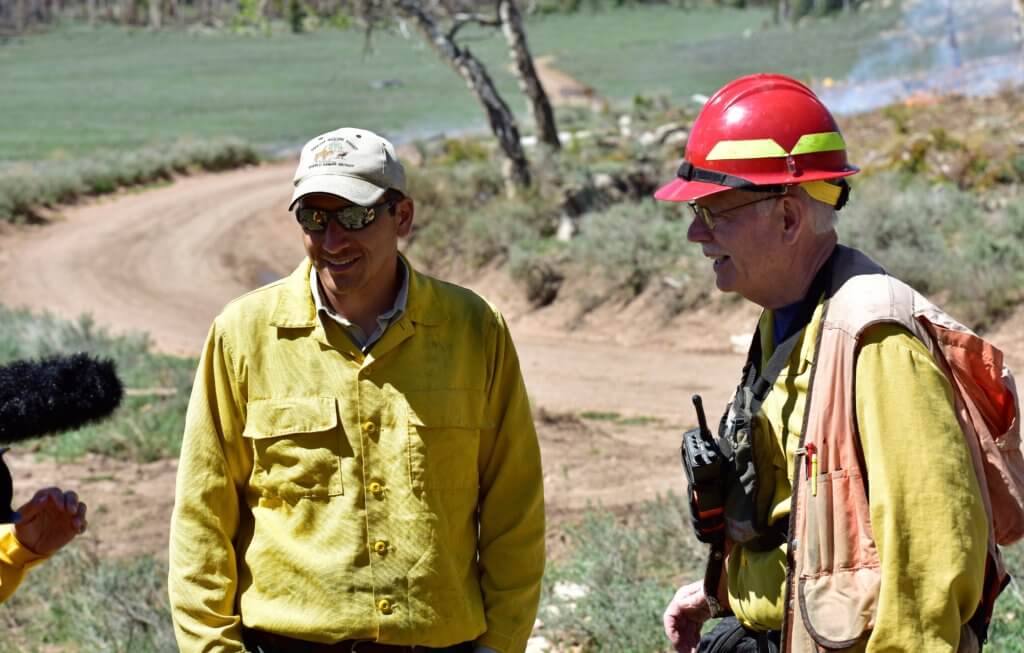
Apprehension and fix
Although the district fire personnel and management agreed to support research and host FASMEE, there was initial uneasiness with the additional burden. Managers have a job to do and often feel that if research is part of the game plan, it will take away from their flexibility and may impede their activities
To reduce this burden and apprehension, several specific actions were undertaken by FASMEE including:
- Scheduling several in-person meetings and site visits with the district ranger, forest supervisor and fire specialist, where the science team outlined research objectives and needs, and created consensus for what the expectations of management would be for hosting FASMEE
- Organizing a fire research planning and logistic team to provide for safety, ICS forms, housing, personnel accountability, transportation and communication co-ordination among individual scientists, research – and incident management teams; conducting science briefing and after-action reviews.
- Conducting regular calls and in-person meetings among the FASMEE planning and logistical team, science leads, and management discussing plans, logistics, prescriptions, meteorology, and probable burn date.
- Requiring all participating scientists to pre-visit each burn site, locate all data collection instrument location points, complete a dry run of deployment, have personal protective equipment, attend pre-fire briefings, and be escorted if not fire qualified (Figure 3).
- Requiring all media personnel associated with FASMEE to be coordinated through the research PI, FASMEE liaison team and local public affairs officer (Figure 4).
- Recruiting local incident meteorologist from the National Weather Service to provide daily forecasts and briefings to management and research staff.
- Providing research instrumentation associated with the research that could assist management in fire operations including unmanned aircraft systems infrared surveillance and photography; instructing two classes on fuels and smoke modeling tools to Fishlake National Forest fire and fuel managers.
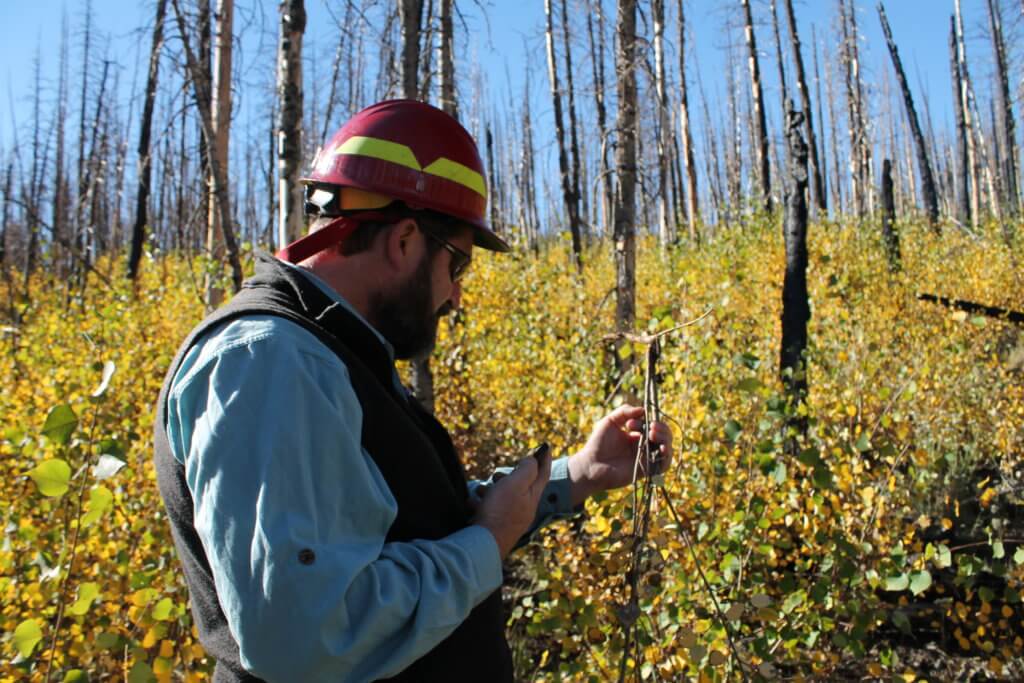
Manning Creek stand-replacement prescribed fire on the Fishlake National Ranger District, Fishlake National Forest, Utah, June 20, 2019.
Photo by Roger Ottmar, USDA Forest Service.Improvements
All pre-fire planning and preparation effectively provided a comfortable environment and reduced the anxiety of the prescribed burn team and management. However, several improvements became evident that should be considered in future science-manager collaborations similar to FASMEE. These include:
- The provision of funding to cover land managers’ costs associated with hosting scientific projects.
- Increasing availability of fire qualified squad bosses to escort research teams.
- Improving radio communication between scientists and incident fire managers.
- Improving accountability for site access by individual scientists before and after burns.
Outcomes
This co-operative spirit led to the teams safely achieving several positive outcomes on complex prescribed fire ignitions. Data collected will be available to all scientists to advance fire and smoke models in operation today, improving land managers’ ability to use and fight fire. In addition to the publications that are generated by the scientific efforts, other tangible benefits resulted from the work. Scientists collected pre-fire fuel and fuel moisture data that were made available to the fire staff to evaluate pre-treatment effectiveness and prescription readiness. In addition, drone flights with photographic and infrared cameras were used to grid the area for hot spots inside and outside the fire line. Finally, recruiting a meteorologist for the project was a critical success to both scientists and managers and there is now a US Forest Service process for requesting an incident meteorologist for large prescribed fire projects.
Developing a clearly defined strategy that meets both science and management objectives is essential if actionable research projects are to be hosted by land managers. Scientists need to be aware that the hosting agency has specific accomplishments and objectives that need to be met and develop ways to limit or eliminate the impact on the fire staff and management personnel. FASMEE was able to provide this co-ordination and continuity, and has developed guidelines to follow for future co-operative ventures.
About the authors
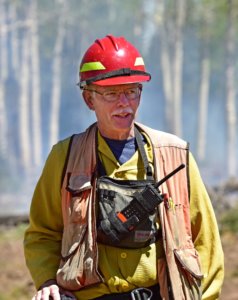 Roger Ottmar is a research forester with the Fire and Environmental Research Applications Team, Pacific Northwest Research Station at the Pacific Wildland Fire Sciences Laboratory located in Seattle, Washington. Ottmar has been involved with fuel-, fire- and smoke-related research across the United States, Brazil, Portugal and Mexico. Ottmar led the Prescribed Fire Combustion Atmospheric Dynamics Research Experiment (RxCADRE) and currently leads the Fire and Smoke Model Evaluation Experiment (FASMEE) and the Department of Defense 3D Fuel Characterization project. Contact him at [email protected]
Roger Ottmar is a research forester with the Fire and Environmental Research Applications Team, Pacific Northwest Research Station at the Pacific Wildland Fire Sciences Laboratory located in Seattle, Washington. Ottmar has been involved with fuel-, fire- and smoke-related research across the United States, Brazil, Portugal and Mexico. Ottmar led the Prescribed Fire Combustion Atmospheric Dynamics Research Experiment (RxCADRE) and currently leads the Fire and Smoke Model Evaluation Experiment (FASMEE) and the Department of Defense 3D Fuel Characterization project. Contact him at [email protected]
Morgan Varner is director of research, Tall Timbers Research Station, Florida.
Kevin Hiers is a wildland fire scientist, Tall Timbers research Station, Florida.
Kelly Cornwall is district fire management specialist, Richfield Ranger District, Richfield, Utah.
Jason Kling is district ranger, Richfield Ranger District, Richfield, Utah.
